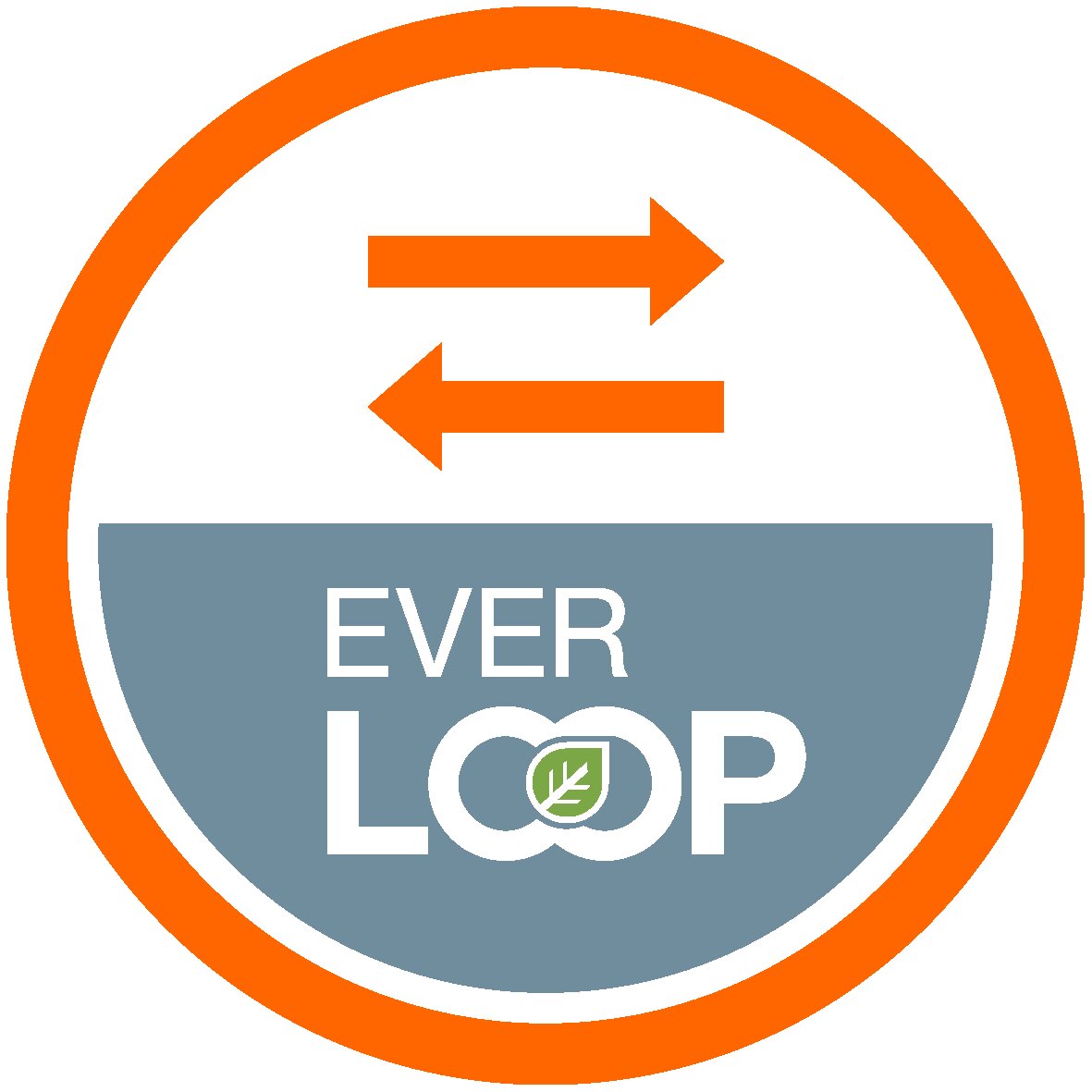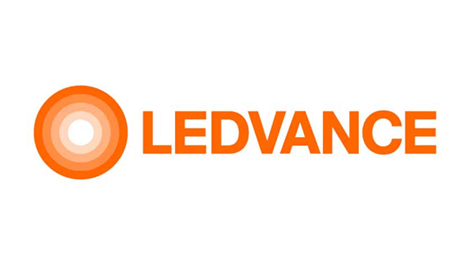LEDVANCE – LEDVANCE launches EVERLOOP series of sustainable luminaires
Sustainable solution to a circular economy: LEDVANCE EVERLOOP features luminaires with replaceable light sources and drivers
The lighting experts from LEDVANCE launch a new product series, EVERLOOP, featuring luminaires with conveniently replaceable LED light sources and drivers. Rather than disposing of luminaires in their entirety, the product lifecycle of EVERLOOP luminaires supports various individual changes of light sources and drivers as well as software upgrades and thus maximize their lifespan and reduce waste. EVERLOOP products are not only a sustainable choice but also a convenient one for installers. The first model of the series to be available is the LEDVANCE Linear IndiviLED Gen 2 in December 2023 as direct and indirect versions with On/Off or DALI options respectively.

LEDVANCE EVERLOOP features luminaires with replaceable light sources and drivers.
With EVERLOOP, LEDVANCE promotes a circular economy by maximizing the lifespan of their luminaires. Rather than having to replace luminaires in their entirety individual light sources and drivers can be conveniently replaced. This makes EVERLOOP a sustainable and convenient choice for installers, planners, and facility managers, among others for sustainable efficiency of industrial and office applications as well as public buildings. Benefits include an extended lifetime and reduced waste, as well as cost savings, and maintaining the same looks in architectural settings as luminaires’ components can be replaced.
“EVERLOOP is our answer to the challenge of going from a linear to a circular product lifecycle for luminaires, contributing to the EU’s plan to reduce electronic waste,” said Nuno Paiva, Head of Professional Portfolio Management at LEDVANCE. “The key feature of EVERLOOP luminaires is that critical components, such as the light sources and drivers, are conveniently upgradeable or replaceable, with available spare parts. That makes the luminaire EVER-lasting. In the future, we intend to integrate this feature into more and more of our luminaire series to save material and minimize waste.”
The IndiviLED models will be followed by additional EVERLOOP models in 2024 including LEDVANCE Panel IndiviLED Gen 2 and LEDVANCE Damp Proof G2 among others.
“From line to loop”: LEDVANCE LOOP brand bundles the lighting experts’ sustainability endeavors
Recently, LEDVANCE has introduced a sub-brand for all of the company’s sustainability initiatives, including the launch of the EVERLOOP product range. This umbrella-and-spokes model covers all efforts and measures across the company to transform the lighting industry into a greener one.
Find out more about the concept behind the LEDVANCE LOOP brand here.
SourceLEDVANCE
EMR Analysis
More information on LEDVANCE: https://www.ledvance.com + With subsidiaries in more than 50 countries and business activities in over 140 countries, LEDVANCE is one of the world’s leading companies in the field of general lighting for professional customers and end users. Emerging from OSRAM’s general lighting division, LEDVANCE’s portfolio includes a wide range of LED luminaires for a variety of applications, intelligent lighting products for smart homes and smart buildings, one of the most comprehensive offerings of advanced LED lamps in the lighting industry, and traditional lamps. In addition to offering products under its own product brand LEDVANCE, the company continues to use the OSRAM and SYLVANIA trademarks for many of its products in agreement with OSRAM. Beyond lighting, LEDVANCE offers vertically integrated, renewable energy solutions for the building sector. Together, the lighting division and the renewable energy division form a comprehensive ecosystem for residential, commercial and industrial buildings.
To reflect our broad range of products and solutions, we offer a variety of brands under our LEDVANCE corporate umbrella. Under the LEDVANCE product brand, we sell an extensive line of products for residential, commercial and industrial applications. In agreement with OSRAM, we also sell a large selection of products under the OSRAM and SYLVANIA product brands. In addition to this, we have a plethora of brands for our owned technologies and features, like our light management system VIVARES, PHASE EV™ charging infrastructure as well as our BIOLUX Human Centric Lighting system.
After spinning off from OSRAM in 2016, the company is now owned by Chinese lighting enterprise MLS Co., LTD.

More information on Sun Qinghuan (President, MLS + Chief Executive Officer and Managing Director, LEDVANCE): See the full profile on EMR Executive Services
More information on Chu Shi-Ting (Managing Director, LEDVANCE): See the full profile on EMR Executive Services
More information on Bart Mei (Chief Sales & Marketing Officer, LEDVANCE): See the full profile on EMR Executive Services
More information on Gareth Jackson (Chief Operating Officer, LEDVANCE): See the full profile on EMR Executive Services
More information on the LEDVANCE Sustainability Strategy and Sustainability Report 2022: See the full profile on EMR Executive Services
More information on Vivian Lee-Lauss (Head of Global Branding and Communications, LEDVANCE): See the full profile on EMR Executive Services
More information on Nuno Paiva (Head of Professional Portfolio Management, LEDVANCE): See the full profile on EMR Executive Services
More information on “LEDVANCE LOOP” (EVERLOOP and NATURELOOP) by LEDVANCE:
- Sub-brand for all LEDVANCE sustainability efforts and measures across the company. This includes new product ranges, reducing CO2 levels by a million tons annually in transportation and improving demand planning with AI.
- Under the LEDVANCE LOOP umbrella, two new product ranges will be launched:
- EVERLOOP is a range of innovative products that enable professional customers to replace certain components of a luminaire, thereby increasing the lifespan of a product and reducing waste.
- NATURELOOP, a product line catering to end-consumers, will offer products that are made from recycled materials.
- Under the LEDVANCE LOOP umbrella, two new product ranges will be launched:
- “LEDVANCE LOOP” will also be the name of the new optimized headquarters of LEDVANCE.
- Sustainability is not a destination but a continuous journey. It’s about more than just being environmentally conscious; it’s about reshaping our practices, reducing our carbon footprint, creating collaborative spaces, and promoting ethical business conduct. As we evolve, we’re not only enhancing our competitiveness but also nurturing a sustainable future for our business, the environment, and our people. It’s our pledge to do better today than we did yesterday and to inspire others to join us on this path. This is what LEDVANCE LOOP stands for.
More information on Digital Addressable Lighting Interface (DALI): https://www.dali-alliance.org/ + The DALI Alliance is the global industry organization for DALI®, the internationally-standardized protocol for digital communication between lighting-control devices. DALI is the Digital Addressable Lighting Interface.
Building on the long-established benefits of DALI, the DALI-2™ certification program brings the promise of significantly improved interoperability along with more features and functions including sensing and data gathering. Meanwhile, D4i™ enables DALI for intelligent, IoT-ready luminaires. We have also introduced different connectivity options over wireless and IP-based networks and added the new DALI+™ brand.
DALI-2 refers to the latest version of the DALI protocol.
Compared with DALI version-1, there are many new commands and features in DALI-2. While DALI version-1 only included control gear, DALI-2 includes control devices such as application controllers and input devices (e.g. sensors), as well as bus power supplies.
DALI-2 is focused on interoperability of products from different vendors, and the DALI-2 certification program confirms compatibility of products with the relevant specifications.
EMR Additional Notes:
- Circular Economy:
- A circular economy is a systemic approach to economic development designed to benefit businesses, society, and the environment. In contrast to the ‘take-make-waste’ linear model, a circular economy is regenerative by design and aims to gradually decouple growth from the consumption of finite resources.
- In such an economy, all forms of waste, such as clothes, scrap metal and obsolete electronics, are returned to the economy or used more efficiently.
- The aim of a circular economy is hence to create a closed-loop system where waste and pollution are minimized and resources are conserved, reducing the environmental impact of production and consumption.
- Sustainability Vs. Circular Economy:
- Circularity focuses on resource cycles, while sustainability is more broadly related to people, the planet and the economy. Circularity and sustainability stand in a long tradition of related visions, models and theories.
- A sustainable circular economy involves designing and promoting products that last and that can be reused, repaired and remanufactured. This retains the functional value of products, rather than just recovering the energy or materials they contain and continuously making products anew.
- LED:
- LED stands for light emitting diode. LED lighting products produce light up to 90% more efficiently than incandescent light bulbs. How do they work? An electrical current passes through a microchip, which illuminates the tiny light sources we call LEDs and the result is visible light.
- A light-emitting diode is a semiconductor light source that emits light when current flows through it. Electrons in the semiconductor recombine with electron holes, releasing energy in the form of photons.
- LED vs. Halogen:
- Halogen bulbs, while lasting longer than incandescent bulbs, only last up to 2,000 hours. In contrast, LED bulbs can last up to 25,000 hours, and LED tubes are rated for up to 50,000 hours. LED bulbs can use as much as 80% percent less energy than halogen bulbs.
- There’s obviously a clear winner when it comes to LED vs halogen lighting. LED lights are more energy-efficient, have a longer lifespan, and offer more choices in color temperature. They do cost a little more, but their extremely long lifespan easily offsets the higher upfront cost.
- microLED:
- Compared to widespread LCD technology, microLED displays offer better contrast, response times, and energy efficiency. They are also capable of high speed modulation, and have been proposed for chip-to-chip interconnect applications.
- MicroLED prototype displays have been shown to offer up to 10 times more brightness than the best OLED panel while being significantly more power efficient, making them an exciting new technology in the world of displays.
- OLED (Organic Light-Emitting Diode):
- This refers to the panel that’s used inside an OLED TV – or any other kind of OLED screen. So it’s the OLED panel makes OLED TVs stand out in comparison to other types of panels. You’ll also find CRT (cathode ray tube), LED (light-emitting diode), LCD (liquid crystal display), or QLED (quantum dot).
- LED LCD screens use a backlight to illuminate their pixels, while OLED’s pixels produce their own light. You might hear OLED’s pixels called ‘self-emissive’, while LCD tech is ‘transmissive’. The light of an OLED display can be controlled on a pixel-by-pixel basis.
- OLED TVs should offer better overall eye comfort than QLED and any other LCD-based screen, because OLED produces significantly less blue light than LED-backlit QLED TVs.
EMR Additional Notes on WEEE:
- https://ec.europa.eu/environment/topics/waste-and-recycling/waste-electrical-and-electronic-equipment-weee_en
- Waste from Electrical and Electronic Equipment (WEEE): EU rules on treating waste electrical and electronic equipment, to contribute to sustainable production and consumption.
- Waste from electrical and electronic equipment includes a large range of devices such as computers, fridges and mobile phones at the end of their life. This type of waste contains a complex mixture of materials, some of which are hazardous. These can cause major environmental and health problems if the discarded devices are not managed properly. In addition, modern electronics contain rare and expensive resources, which can be recycled and re-used if the waste is effectively managed.
- Improving the collection, treatment and recycling of electrical and electronic equipment (EEE) at the end of their life can
- improve sustainable production and consumption
- increase resource efficiency
- contribute to the circular economy
- The EU has introduced the WEEE Directive and the RoHS Directive to tackle the issue of the growing amount of WEEE.


